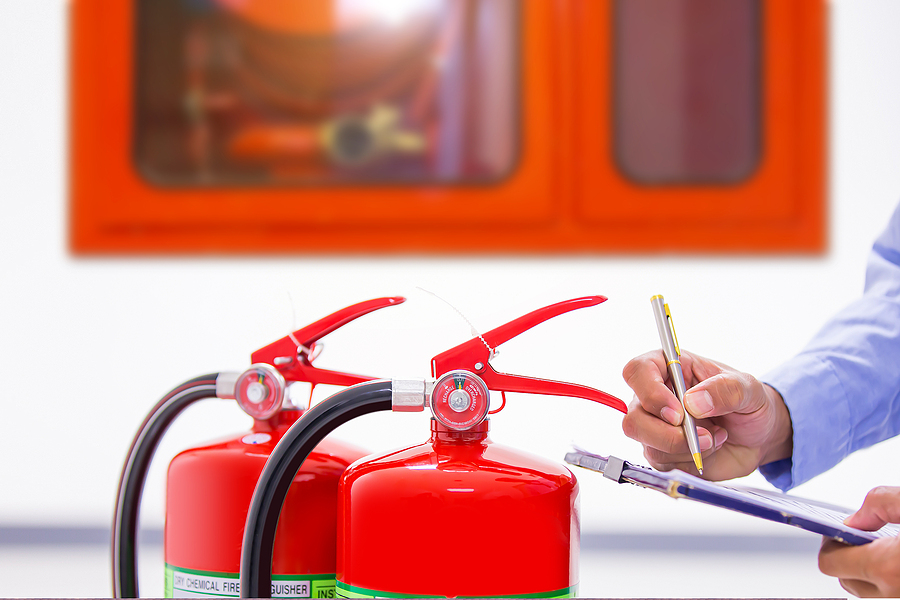It is easy to take your fire extinguisher for granted; nevertheless, many people are unaware that the cylinders need to be maintained regularly. Even if the extinguishers have never been used before, there are far too many situations in which they are not entirely charged and cannot extinguish a fire. This is the case even if they have never been used. Every commercial establishment proprietor must understand better how to refill fire extinguishers to avoid the situation described above. Everything that you need to know is included here.
WHEN SHOULD FIRE EXTINGUISHERS BE RECHARGED?
You will need to give a fire extinguisher time to recharge before using it again after completely depleting its charge while fighting a flame. However, this is one of many situations in which fire extinguishers require maintenance and inspection. The following are some of the most frequently overlooked opportunities to arrange a recharge:
- Immediately after usage, regardless of how little waste was produced, you must: Even if you mistakenly discharge an extinguisher for only a second or two, this lowers the internal pressure to the point where you should get it refilled. Filling the cylinder to its maximum capacity before using it will guarantee that you have its full extinguishing capability at your disposal.
- At various intervals over its existence, recharge of the extinguisher may be required if even minute leaks cause the pressure to drop significantly. The National Fire Protection Association (NFPA) recommends doing an internal examination and refilling of fire extinguishers every six to 12 years, depending on the kind of extinguisher, to address the issue of leakage proactively.
- When there is a low reading on the pressure gauge: A loss of pressure in the cylinder may have been brought on by external forces or damage to the cylinder itself. After the fire extinguisher has been inspected to verify that it has not sustained any structural damage and recharged, it is ready to be used again.
HOW TO INSPECT AND READ THE PRESSURE GAUGE ON THE FIRE EXTINGUISHER
The NFPA requires monthly fire extinguisher inspections; however, you may need more training to do these checks. Checking the pressure gauge should be one of the things you do throughout these checkups. This dial in the shape of a circle is located near the handle, indicating whether the unit is overcharged, undercharged, or charged to the appropriate level. When the needle points to the green area, the pressure is at its maximum. If the hand is in the red, the fire extinguisher needs servicing, maybe because the pressure is too high or too low.
How does one go about recharging a fire extinguisher?
Recharging your fire extinguisher can only be done by a professional fire protection firm. Professionals have the equipment, instruction, and expertise necessary to carry out this work in a manner that is both safe and effective. The following is an outline of the process of recharging fire extinguishers:
- The pressure in the cylinder is released, and the extinguishing agent is removed.
- After detaching the discharge valve from the cylinder, it is taken apart and thoroughly cleaned before being reassembled.
- The technician does an exterior and interior visual inspection of the cylinder to search for any indications of damage.
- After disassembling, the component is pieced back together and reattached to the cylinder.
- According to the directions for recharging, an extinguishing agent such as carbon dioxide, a dry chemical, a wet chemical, water, or any other liquid is added to the cylinder before it is refilled.
- The fire extinguisher is re-pressurized until the gauge shows that it has reached its maximum capacity.
- To identify any potential issues, a leak test is carried out.
- The discharge nozzle or hose is put back into its original position.
- The fire extinguisher is put on a scale to see whether or not it falls within the acceptable range of tolerances.
- A new tamper seal and a new recharge tag are connected to the cylinder once they are both replaced.
TODAY IS THE DAY YOU SHOULD SERVICE YOUR FIRE EXTINGUISHER.
Bring the cylinder to Brazas Fire for examination if you are unsure of the time since the last time your fire extinguisher was serviced or if you have observed that the gauge is displaying a low-pressure reading. We will inspect and test the fire extinguisher before recharging it and returning it to you in like-new condition. The knowledge that you are sufficiently safeguarded from fire for the next few years provides you with the peace of mind you deserve.
Please call Brazas Fire at (505) 889-8999 as soon as possible if you have questions regarding fire extinguisher inspections or if you would like to arrange services. Businesses located everywhere in New Mexico may count on us for sales of fire extinguishers as well as inspection, testing, and maintenance services.
